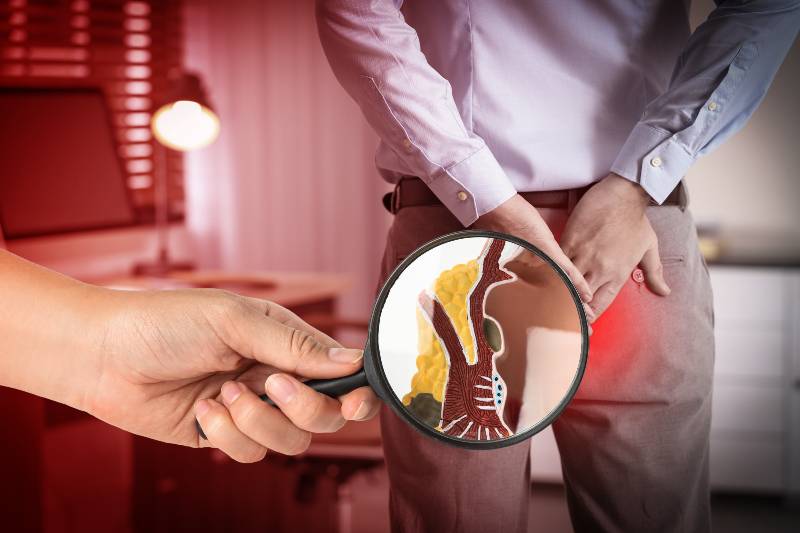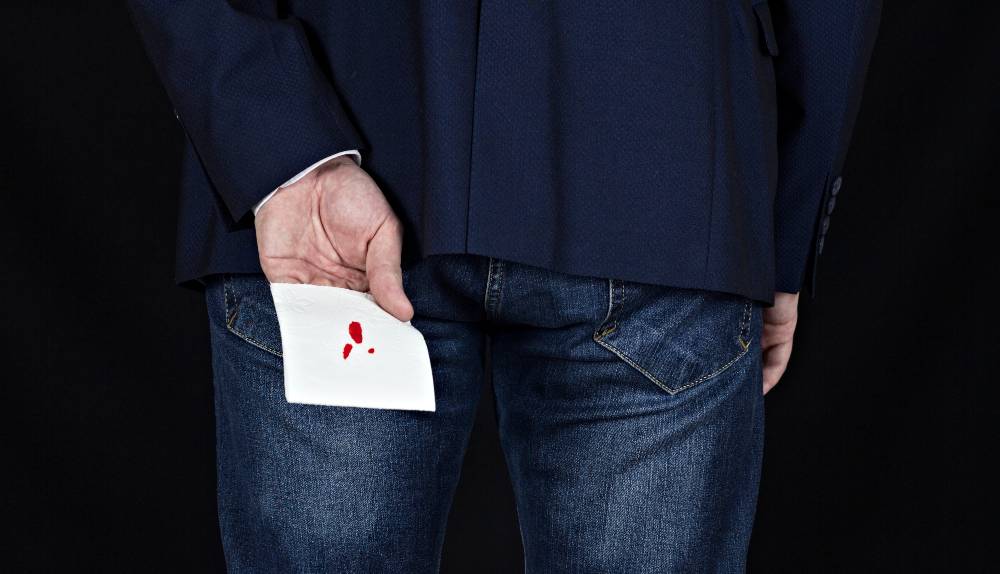Are Thin Stools and Feces Coloration Indications of Hemorrhoid Disease?
Hemorrhoid Disease | Hemorrhoids result from a malfunction in the human anatomy wherein the anal tract is too narrow for the large feces to move across.
When this happens, the large feces will get stuck in the rectum and you have to exert more effort to excrete it. This would lead to anal fissures and hemorrhoids.
A well-known indication of hemorrhoid disease is the presence of vivid red blood on your stools. If you are suffering from prolapsed internal hemorrhoids, you can feel pain, itchiness, and discomfort in the anal tract.
External hemorrhoid formation usually causes blood clots. This blood clot in the anal vein is known as thrombosis.
If blood clot forms, the anus will bleed, swell, and for a hard lump. As the blood clot disperses in the anal fluid, you will begin to feel itchiness.
RELATED: Types of Poop | 13 Things Your Poop Says About You
Are Thin Stools and Feces Coloration Indications of Hemorrhoid Disease?

Some symptoms of this disease are:
- Painless bleeding of the anal tract for not too severe hemorrhoid
- Itchiness
- Pain and discomfort for severe cases
- Swollen anus
- A hard lump in the anal area
- Leaking of feces
These symptoms vary depending on the type of hemorrhoid. For internal hemorrhoids, no pain will be felt. For external hemorrhoids, pain and discomfort are always felt.
Thin stools can be one of the hemorrhoid symptoms. This is due to the difficulty of the rectum to excrete the stool, squeezing it too much and thus causing it to become flat and thin.
In some cases, the stools you release are small, round wastes. As stool gets hard and dry, it forms circular lumps, and when the rectum contracts, these lumps detach from each other.
Feces coloration is a clear indication of hemorrhoid disease. Feces are usually brown, which resulted from the mixture of water, bilirubin, bacteria, bile, red blood cells, and cellulose.
As bleeding occurs, feces turn reddish-brown. In some cases, the feces become dark in color, which indicates a lack of water and other fluids.
This is why it becomes difficult for the rectum to let the feces pass through it. The darker the color, the less the moisture of the stools, the harder it is to excrete.
For external hemorrhoids, an accurate examination must be done to fully detect it. You may consult your doctor to know if you have a hemorrhoid.
The possible tests that the doctor can perform are proctoscopy, colonoscopy, sigmoidoscopy, digital rectum exam, and anoscopy. In these tests, your anal veins will be checked for swelling, soreness, and blood clots.
If there are existing abnormalities, your doctor will prescribe some medications to take or apply. He may also check the internal part of the anus to check if you have internal hemorrhoid.
Hemorrhoid is treated in many ways depending on their condition. If it is not severe, you may be prescribed ointments. You may also try to make a home remedy like cream and suppository.
Severe cases of hemorrhoids require the person to undergo surgery. Don't panic if you acquire the above-mentioned symptoms because they can be treated in many ways.
If you are asking yourself are piles causing thin stools you should download the hemorrhoid no more book pdf to know your treatment options.
Article Source: https://EzineArticles.com/expert/William_M_Mason/721775
You Might Also Like:
- Flurona Variant: Double Infection Combination of Flu and Covid-19
- CDC Shortens COVID Quarantine and Isolation Times
- 13 Anti Aging Foods for Seniors
Please stay connected with us on Facebook, Twitter, Instagram, and Pinterest, and make sure to join our community of healthy living and minded people here.
Article Source: http://EzineArticles.com/
Trending
Get Updates
SIGN UP FOR OUR NEWSLETTER TODAY

What Is Retirement In The 21st Century?

Retirement Planning For The 21st Century

The 10 Main Health Issues of Retirees
Related

What Is Retirement In The 21st Century?

